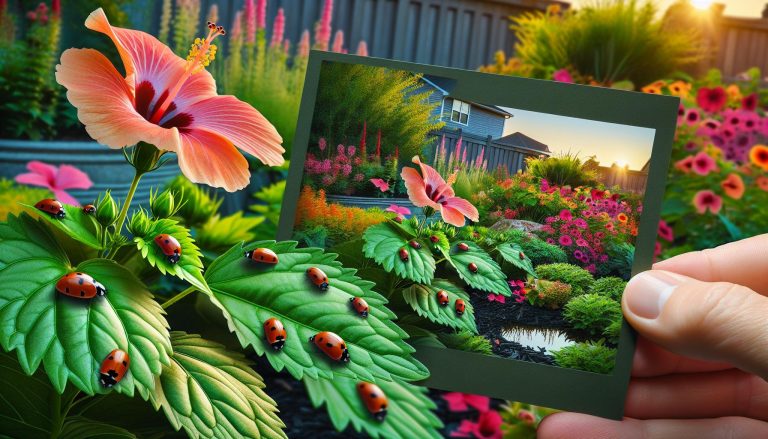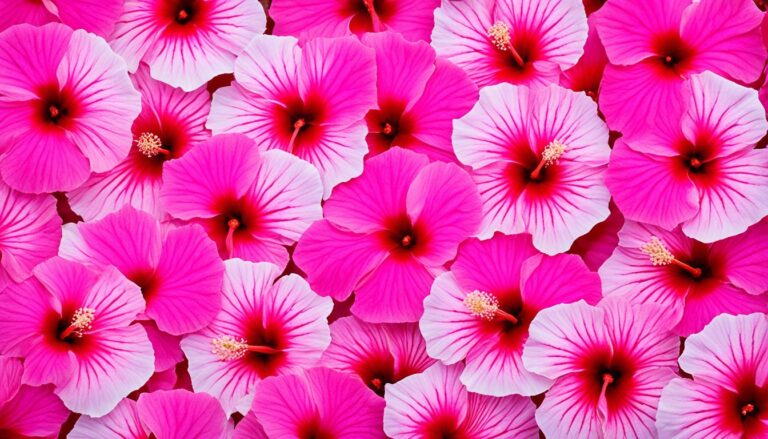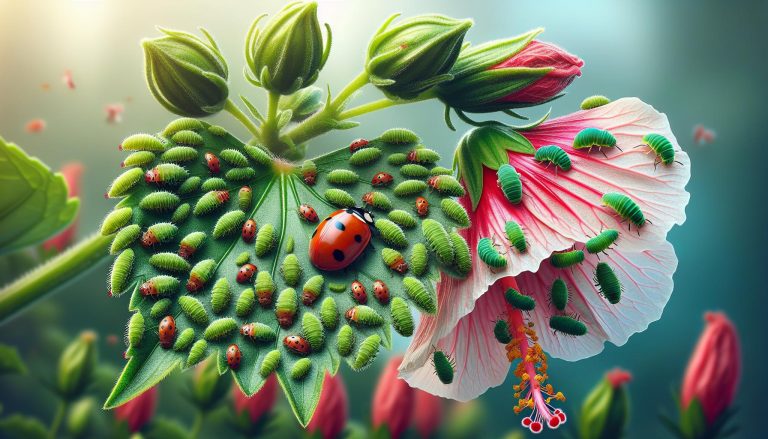Hibiscus Grandiflorus: Growing and Preserving the Stunning Swamp Rosemallow
Have you ever stumbled upon a flower so captivating it takes your breath away? That’s how I felt when I first encountered the Hibiscus grandiflorus, also known as the swamp rosemallow. This stunning native of the southeastern United States boasts enormous, eye-catching blooms that can reach up to 10 inches in diameter.
As a wetland plant, the Hibiscus grandiflorus thrives in swampy areas and along riverbanks. But what makes this species truly special? Is it just its size, or are there other unique characteristics that set it apart from its hibiscus cousins? I’ll dive into the fascinating world of this remarkable flower, exploring its habitat, growth habits, and potential uses in landscaping and beyond.
What Is Hibiscus Grandiflorus?
Hibiscus grandiflorus, commonly known as the swamp rosemallow, is a striking native plant of the southeastern United States. This species stands out among its hibiscus relatives due to its impressive size and adaptability to wetland environments.
Origin and Habitat
Hibiscus grandiflorus thrives in swampy areas, wetlands, and along riverbanks. It’s native to:
- Florida
- Georgia
- Alabama
- Mississippi
- South Carolina
This plant has adapted to survive in:
- Standing water
- Saturated soils
- Coastal plains
- Marshes
I’ve observed its resilience in various wetland ecosystems during my botanical excursions.
Physical Characteristics
Hibiscus grandiflorus boasts several distinctive features:
| Feature | Description |
|---|---|
| Height | 4-8 feet tall |
| Bloom size | Up to 10 inches in diameter |
| Flower color | Pale pink to white |
| Leaf shape | Large, ovate to lanceolate |
| Stem | Thick and robust |
Key attributes:
- Enormous, showy flowers
- Long blooming period (summer to fall)
- Attractive to pollinators, especially hummingbirds
- Deeply lobed leaves with a velvety texture
The plant’s massive blooms are its most striking feature, often dominating the landscape where it grows. Its tall stature and broad leaves create a commanding presence in wetland gardens or naturalized areas.
Growing Hibiscus Grandiflorus
Growing Hibiscus grandiflorus requires specific conditions to thrive. This wetland native demands careful attention to its environment for optimal growth and flowering.
Ideal Climate Conditions
Hibiscus grandiflorus thrives in USDA hardiness zones 7-11. It prefers:
- Full sun to partial shade
- High humidity levels (60-80%)
- Warm temperatures (70-85°F)
- Protection from strong winds
In cooler climates, I’ve found that providing a sheltered location or using microclimates can help mimic its natural habitat.
Soil Requirements
The swamp rosemallow demands specific soil conditions:
- Consistently moist to wet soil
- pH range of 6.1 to 7.5
- Rich in organic matter
- Well-draining yet water-retentive
To replicate its native wetland conditions, I mix equal parts peat moss, compost, and sandy loam soil. This blend ensures proper moisture retention and nutrient availability.
Planting and Care Tips
Follow these steps for successful Hibiscus grandiflorus cultivation:
- Planting:
- Space plants 3-4 feet apart
- Dig a hole twice the size of the root ball
- Amend soil with organic matter
- Water thoroughly after planting
- Watering:
- Keep soil consistently moist
- Water deeply 2-3 times per week
- Use a soaker hose for efficient irrigation
- Fertilizing:
- Apply a balanced, slow-release fertilizer in spring
- Feed monthly during the growing season
- Use a fertilizer with a 10-10-10 NPK ratio
- Pruning:
- Remove dead or damaged branches in early spring
- Pinch back growing tips to encourage bushiness
- Deadhead spent blooms to promote continuous flowering
- Winter care:
- Apply a 2-3 inch layer of mulch around the base
- Protect from frost with burlap or frost cloth
- Reduce watering in dormant periods
By following these guidelines, you’ll create an ideal environment for your Hibiscus grandiflorus to flourish and produce its stunning, oversized blooms.
Benefits of Hibiscus Grandiflorus
Hibiscus grandiflorus offers numerous advantages for gardens and ecosystems alike. Its stunning blooms and ecological importance make it a valuable addition to any landscape.
Ornamental Value
Hibiscus grandiflorus boasts eye-catching, oversized flowers that can reach up to 10 inches in diameter. These vibrant blooms, typically white or pale pink with deep red centers, create a striking focal point in any garden. The plant’s large, heart-shaped leaves provide an attractive backdrop, adding texture and depth to landscaping designs. As a tall perennial, growing up to 8 feet in height, it’s perfect for creating natural privacy screens or adding vertical interest to garden beds.
Ecological Importance
Hibiscus grandiflorus plays a crucial role in supporting local ecosystems. Its large, nectar-rich flowers attract a variety of pollinators, including bees, butterflies, and hummingbirds. This makes it an excellent choice for wildlife gardens or conservation efforts. The plant’s dense foliage also provides shelter for small birds and insects. In wetland areas, Hibiscus grandiflorus helps prevent soil erosion and filters pollutants from water, contributing to improved water quality. Its ability to thrive in soggy conditions makes it an ideal choice for rain gardens or areas prone to flooding.
Common Uses of Hibiscus Grandiflorus
Hibiscus grandiflorus offers versatile applications in both landscaping and traditional medicine. Its large, showy flowers and impressive foliage make it a standout plant in various settings.
Landscaping Applications
I’ve found Hibiscus grandiflorus to be an excellent choice for creating visual impact in gardens. Here’s how you can use this stunning plant:
- Focal point: Plant it as a centerpiece in large gardens or open spaces
- Wetland gardens: Incorporate it into rain gardens or pond edges
- Privacy screens: Create natural barriers along property lines
- Wildlife gardens: Attract pollinators and birds with its nectar-rich flowers
- Coastal landscapes: Use its salt tolerance for seaside plantings
For best results, I plant Hibiscus grandiflorus in groups of three or five. This arrangement maximizes its visual impact and creates a more natural look.
Traditional and Medicinal Uses
Hibiscus grandiflorus has a history of traditional and medicinal applications:
| Use | Description |
|---|---|
| Tea | Flowers brewed into a refreshing, vitamin C-rich beverage |
| Skin care | Flower extracts used in lotions for soothing properties |
| Diuretic | Root decoctions believed to promote urination |
| Fever reducer | Leaf infusions traditionally used to lower body temperature |
While these traditional uses exist, it’s crucial to consult a healthcare professional before using Hibiscus grandiflorus for medicinal purposes. Scientific research on its efficacy is limited, and potential side effects or interactions with medications aren’t fully understood.
In my garden, I primarily grow Hibiscus grandiflorus for its ornamental value. Its large, pink flowers never fail to impress visitors and provide a tropical feel to the landscape.
Challenges in Cultivating Hibiscus Grandiflorus
Growing Hibiscus grandiflorus presents unique obstacles due to its specific habitat requirements and vulnerability to certain pests and diseases. Let’s explore these challenges and the conservation efforts surrounding this magnificent plant.
Pest and Disease Management
Hibiscus grandiflorus faces several pest and disease threats:
- Japanese beetles: These voracious eaters can quickly defoliate plants
- Aphids: They cluster on new growth, sucking sap and weakening the plant
- Spider mites: Tiny pests that cause stippling on leaves, especially in dry conditions
- Whiteflies: These insects secrete honeydew, leading to sooty mold growth
To combat these pests:
- Regularly inspect plants for early detection
- Use insecticidal soaps or neem oil for mild infestations
- Introduce beneficial insects like ladybugs for natural pest control
- Prune affected areas to prevent spread
Disease management is equally crucial:
- Root rot: Avoid overwatering and ensure well-draining soil
- Leaf spot: Remove affected leaves and improve air circulation
- Hibiscus chlorotic ringspot virus: Remove infected plants to prevent spread
I’ve found that maintaining proper spacing between plants significantly reduces disease risk.
Conservation Efforts
Hibiscus grandiflorus faces habitat loss due to wetland drainage and development. Conservation initiatives include:
- Habitat preservation: Protecting natural wetland areas
- Restoration projects: Reintroducing the species to suitable habitats
- Seed banking: Preserving genetic diversity for future restoration efforts
- Public education: Raising awareness about the plant’s ecological importance
Conservation organizations collaborate with botanists and landowners to:
- Monitor wild populations
- Implement sustainable harvesting practices
- Develop cultivation techniques for ex-situ conservation
Supporting these efforts through native plant gardening and participating in local conservation programs can make a significant impact on preserving this spectacular species.
Conclusion
Hibiscus grandiflorus stands out as a remarkable plant with its stunning blooms and ecological importance. It’s not just a beautiful addition to gardens but also plays a crucial role in supporting pollinators and local ecosystems. While it may present some cultivation challenges, the rewards of growing this magnificent species far outweigh the efforts. By understanding its needs and participating in conservation efforts, we can ensure that future generations will continue to enjoy the swamp rosemallow’s beauty and benefits. I hope this guide has inspired you to appreciate and perhaps even cultivate this extraordinary hibiscus variety.





